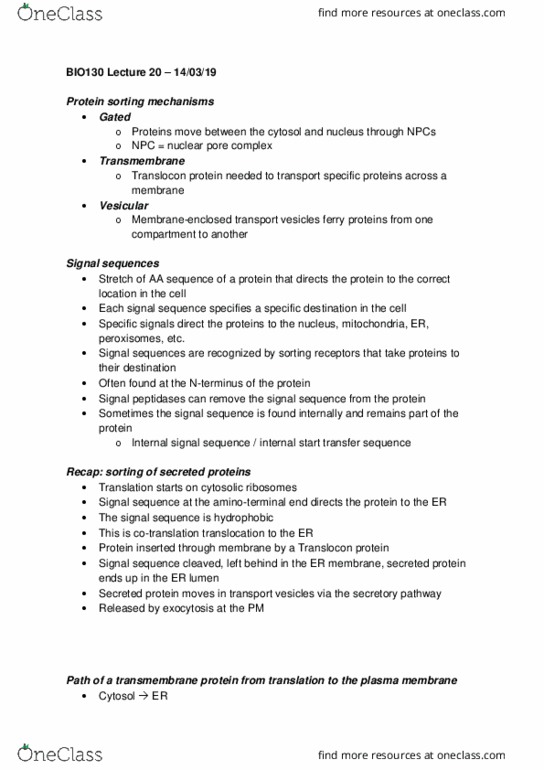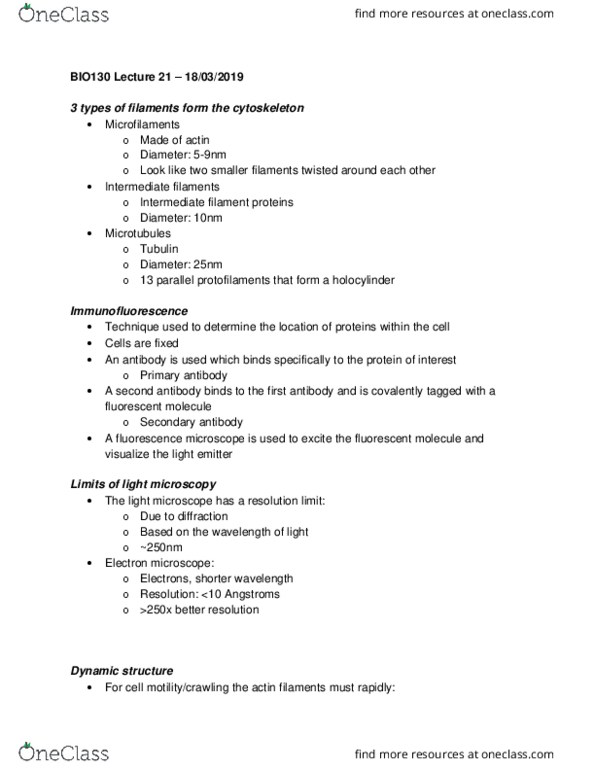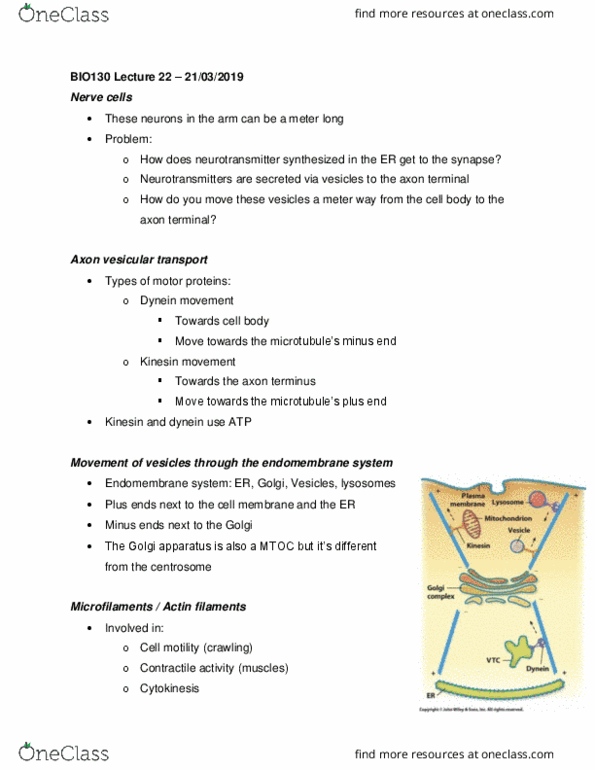BIO130H1 Lecture Notes - Lecture 21: Fluorescence Microscope, Intermediate Filament, Electron Microscope
BIO130H1 verified notes
21/26View all
Document Summary
3 types of filaments form the cytoskeleton: microfilaments, made of actin, diameter: 5-9nm, look like two smaller filaments twisted around each other. Intermediate filament proteins: diameter: 10nm, microtubules, tubulin, diameter: 25nm, 13 parallel protofilaments that form a holocylinder. Limits of light microscopy: the light microscope has a resolution limit, due to diffraction, based on the wavelength of light, ~250nm, electron microscope, electrons, shorter wavelength, resolution: <10 angstroms, >250x better resolution. Intracellular transport: structural support, cell organization, mitosis, cell motility (flagella and cilia, made of, tubulin, long hollow tubes, stiff. Gdp: gdp-bound heterodimers are a bit loser, but growth and disassembly happen only at the ends, gtp-bound heterodimers at the ends growth, gdp-bound heterodimers at the ends disassembly. If it"s not bound to anything than it gets lost at the minus end: but heterodimers are normally nucleated (stabilized) at the minus end by.




